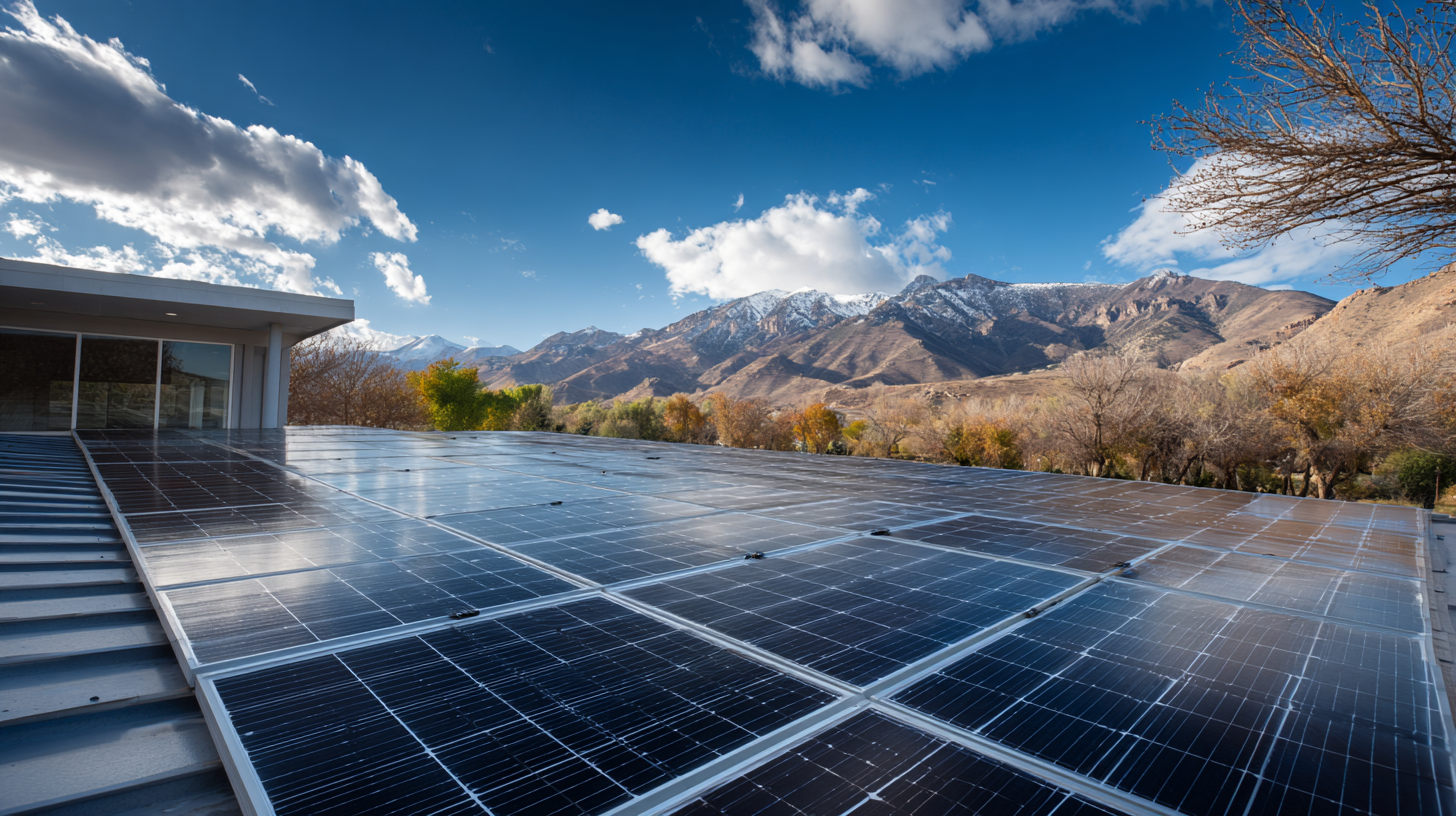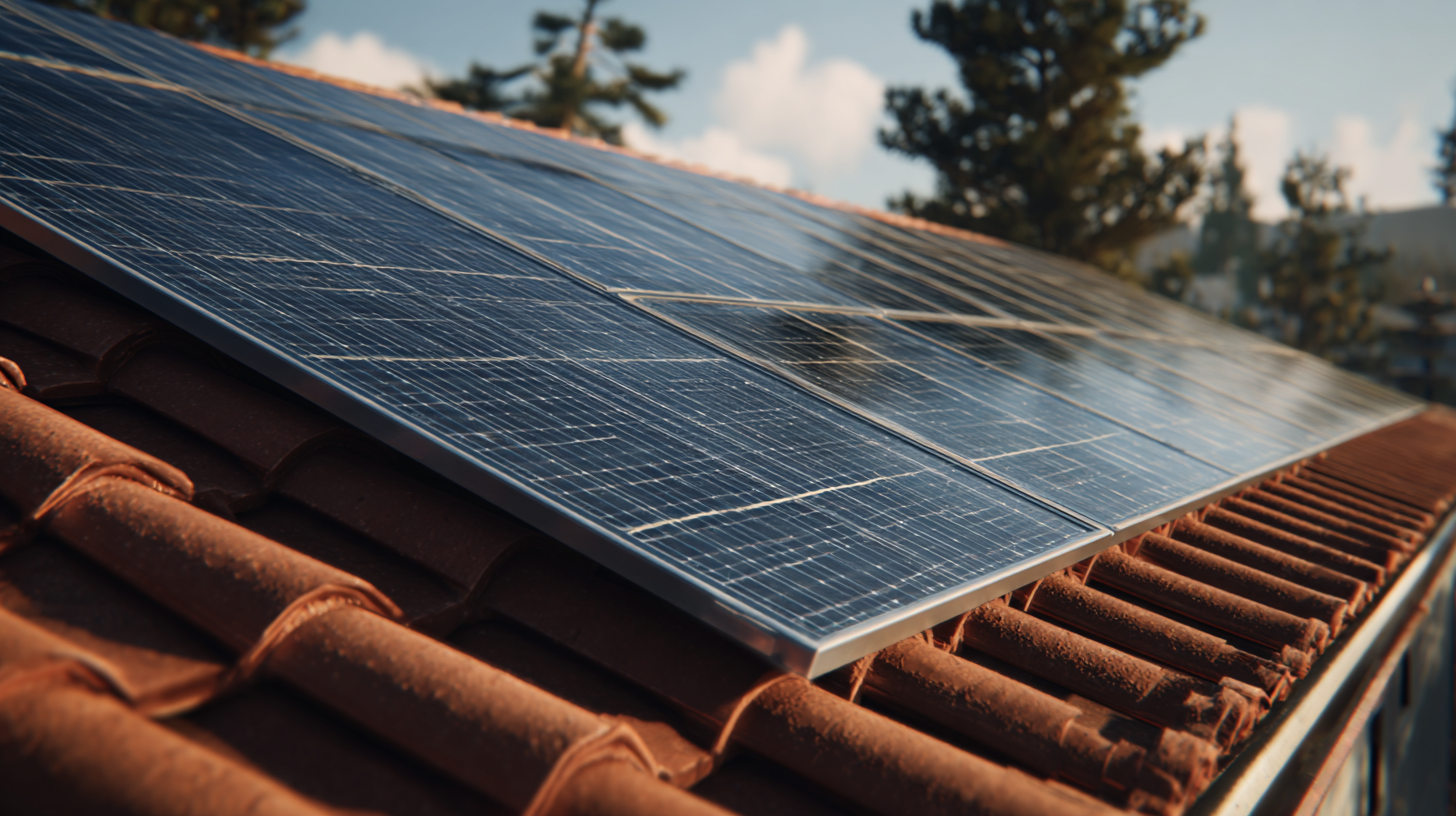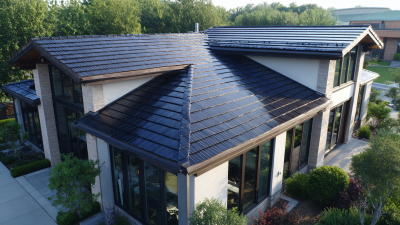Harnessing Solar Power Tiles for Sustainable Home Design Solutions
In recent years, the demand for sustainable home design solutions has surged, driven by a growing awareness of environmental issues and a desire for energy efficiency. Solar power tiles have emerged as a groundbreaking solution, transforming traditional roofing into a source of renewable energy. According to a report by the International Energy Agency, solar power could contribute up to 25% of global electricity generation by 2050, highlighting the vital role of innovative technologies like solar power tiles in achieving this goal. These tiles not only provide aesthetic appeal but also promise to reduce energy costs and carbon footprints for homeowners. With advancements in photovoltaic technology, the integration of solar power tiles in residential design has become more feasible, making sustainable living an accessible reality for many. As we explore the potential of solar power tiles, it is essential to understand the various design solutions they offer, paving the way towards a greener future.

The Environmental Benefits of Solar Power Tiles in Modern Homes
Solar power tiles represent a revolutionary approach to sustainable home design, merging functionality with aesthetics. These innovative tiles not only serve as a roofing material but also act as energy producers, tapping into the sun’s renewable energy. By integrating solar power tiles into modern homes, homeowners can significantly reduce their carbon footprint, promoting an eco-friendly lifestyle that aligns with contemporary environmental goals.
The environmental benefits of solar power tiles extend beyond energy production. They contribute to a decrease in greenhouse gas emissions by supplying clean energy, thereby reducing reliance on fossil fuels. Additionally, solar tiles are designed to last for decades, making them a durable choice that minimizes waste and the need for frequent replacements. Moreover, their installation can lead to lower energy bills and enhanced energy independence, which further emphasizes their value in sustainable home design. Through the adoption of solar power tiles, modern homes can achieve a harmonious balance between energy efficiency and environmental responsibility.

Economic Advantages of Integrating Solar Tiles into Home Design
Integrating solar power tiles into home design offers significant economic advantages that make it an attractive option for sustainable living. According to the International Energy Agency (IEA), solar energy could represent up to 30% of global energy consumption by 2030, highlighting a growing trend towards renewable energy solutions. Homeowners who invest in solar tiles can expect to see a substantial decrease in their electricity bills—studies indicate savings of up to 50% over time. Additionally, the installation of solar tiles can increase a home's value by an average of 4.1%, giving homeowners not only long-term savings but also an attractive return on investment.
Tips: Consider evaluating local incentives or tax credits that may be available for solar energy installations. Some regions offer rebates that can significantly offset the initial costs of solar tile installation, making it an even more economical choice. Researching the most durable and efficient solar tile products can also help ensure you get the best long-term savings and performance.
Investing in solar power tiles not only supports personal economic stability but also contributes to a larger environmental effort. With the construction industry increasingly focused on sustainability, homes designed with these tiles can benefit from higher demand and marketability. Reports from the U.S. Department of Energy suggest that homes with sustainable design features, including solar technology, are becoming more sought after, establishing a favorable scenario for homeowners looking to innovate.
Comparative Efficiency: Solar Tiles vs Traditional Solar Panels
In the realm of sustainable home design, solar power tiles have emerged as a compelling alternative to traditional solar panels. While both solutions harness the sun's energy, the efficiency of solar tiles compared to conventional panels presents a fascinating debate. Solar tiles integrate seamlessly into a building’s architecture, providing aesthetic flexibility alongside energy generation. However, they typically deliver lower energy output per square foot compared to traditional solar panels, which boast higher efficiency rates and established performance metrics.

When evaluating their comparative efficiency, traditional solar panels often take the lead due to their advanced technology and concentrated power capabilities. Solar panels are designed to maximize energy capture, making them suitable for larger installations and offering a greater return on investment over time. In contrast, solar tiles, while less efficient in terms of energy conversion, appeal to homeowners who prioritize design and integration into the overall structure of their homes. As sustainable design continues to evolve, the choice between solar tiles and traditional solar panels ultimately boils down to individual priorities: aesthetic harmony versus maximum energy efficiency.
Innovations in Solar Tile Technology Driving Sustainable Architecture
Innovations in solar tile technology are paving the way for a revolutionary shift in sustainable architecture. As the demand for environmentally-friendly building solutions grows, the introduction of solar skins and building-integrated photovoltaics (BIPV) is transforming traditional design aesthetics. These advancements allow homeowners to seamlessly integrate solar energy solutions into their roofs, blending renewable energy with architectural beauty. The transparent solar cells market is set to swell to $89.88 million by 2032, demonstrating a robust CAGR of 18.40%, indicating a strong trend towards adopting such technologies.
The rapid growth of the solar roofing market, projected to reach $22.59 billion, highlights the increasing industry emphasis on sustainable construction practices. As tier-2 cities in India eagerly innovate housing solutions that prioritize environmental responsibility, the influence of solar tile technology becomes even more palpable. These innovations are not merely technical achievements; they signify a movement towards a more sustainable future, where homes do not just house families but actively contribute to energy generation and conservation, promoting a harmonious coexistence with our environment.
Innovations in Solar Tile Technology
This chart illustrates the annual growth in the adoption of solar power tiles in sustainable home design from 2018 to 2023, showcasing the increasing trend towards sustainable architecture.
Case Studies of Homes Successfully Utilizing Solar Power Tiles
The integration of solar power tiles into home design is gaining traction, with numerous case studies demonstrating their effectiveness in promoting sustainability. For instance, a recent report by the International Renewable Energy Agency (IRENA) highlighted that homes equipped with solar power tiles can produce up to 70% of their energy needs, significantly reducing reliance on traditional power sources. One notable case is a residential project in California, where solar tiles contributed to a net-zero energy home, showcasing a harmonious blend of aesthetics and functionality. This home not only produces enough energy to meet its consumption but also contributes surplus energy back to the grid, benefiting both the homeowner and the local community.
In another compelling example, a renovation project in Germany utilized solar power tiles to transform a historical building into an energy-efficient residence. According to the German Federal Ministry for Economic Affairs and Energy, homes with solar roof installations have seen energy cost reductions of approximately 30% annually. The adaptability and efficiency of solar tiles allowed this property to maintain its heritage while transitioning to sustainable energy practices. These case studies illustrate the practical benefits of solar power tiles, reinforcing their role in the future of eco-friendly home design.
Harnessing Solar Power Tiles for Sustainable Home Design Solutions
| Home Location | Tile Type | Energy Production (kWh/year) | Emission Reduction (tons CO2/year) | Cost Savings ($/year) |
|---|---|---|---|---|
| Austin, TX | Solar Shingle Tiles | 8,500 | 4.2 | 1,200 |
| Portland, OR | Solar Roof Tiles | 6,300 | 3.1 | 900 |
| Miami, FL | Solar Ceramic Tiles | 10,200 | 5.1 | 1,600 |
| San Francisco, CA | Integrated Solar Tiles | 7,800 | 3.9 | 1,100 |
| Seattle, WA | Solar Slate Tiles | 5,200 | 2.5 | 750 |
Related Posts
-

Exploring the Revolution: What are Solar Cell Roof Tiles and Their Benefits?
-

Understanding Issues with pv tiles in Modern Construction
-

Ultimate Guide to Harnessing Solar Power Tiles for Sustainable Energy Solutions
-

Navigating Import and Export Certifications for the Best PV Tiles in the Global Market
-

How to Maximize Energy Efficiency with PV Tiles: Insights and Innovations in Solar Technology
-

Ultimate Guide to Choosing the Best Solar Roof Tiles for Your Home